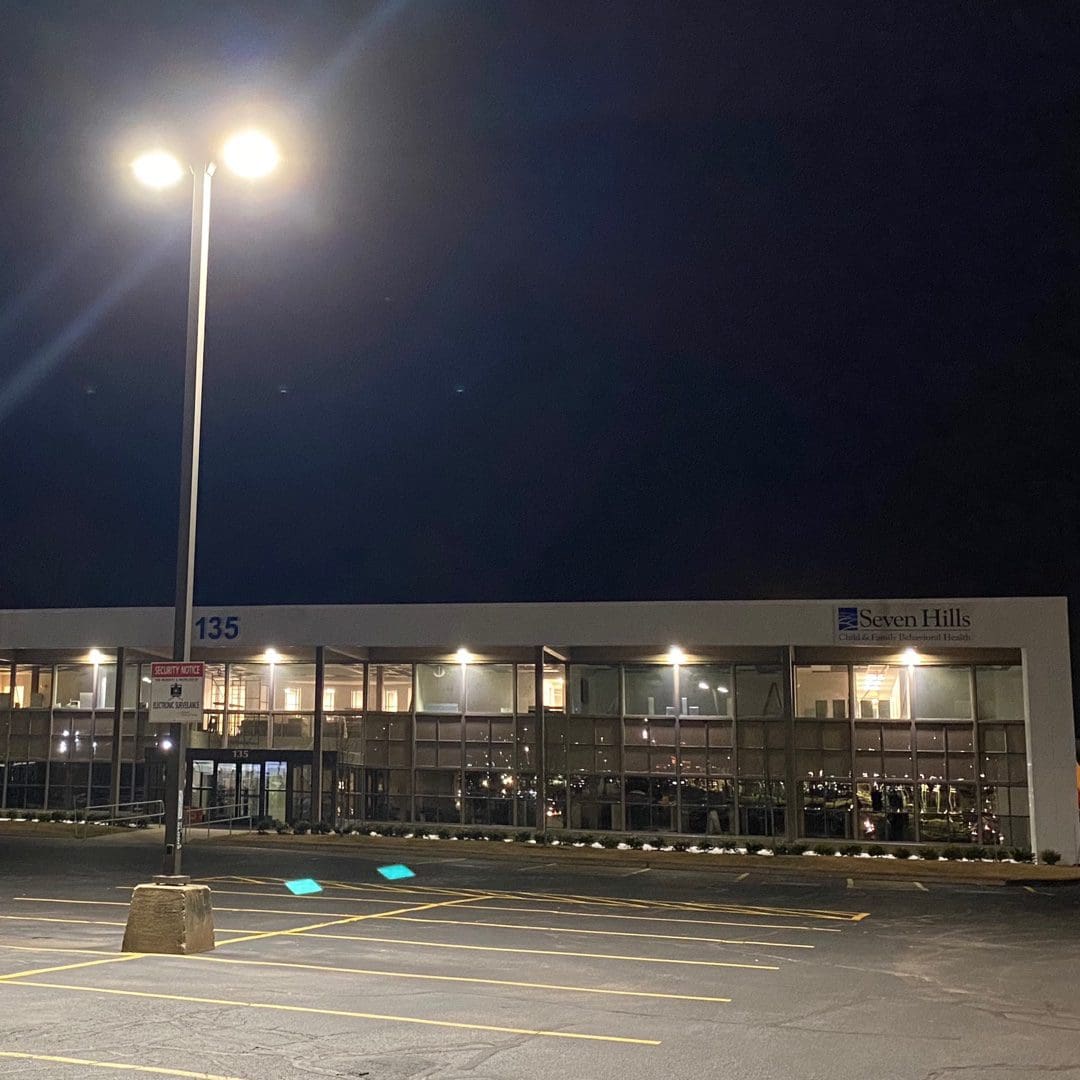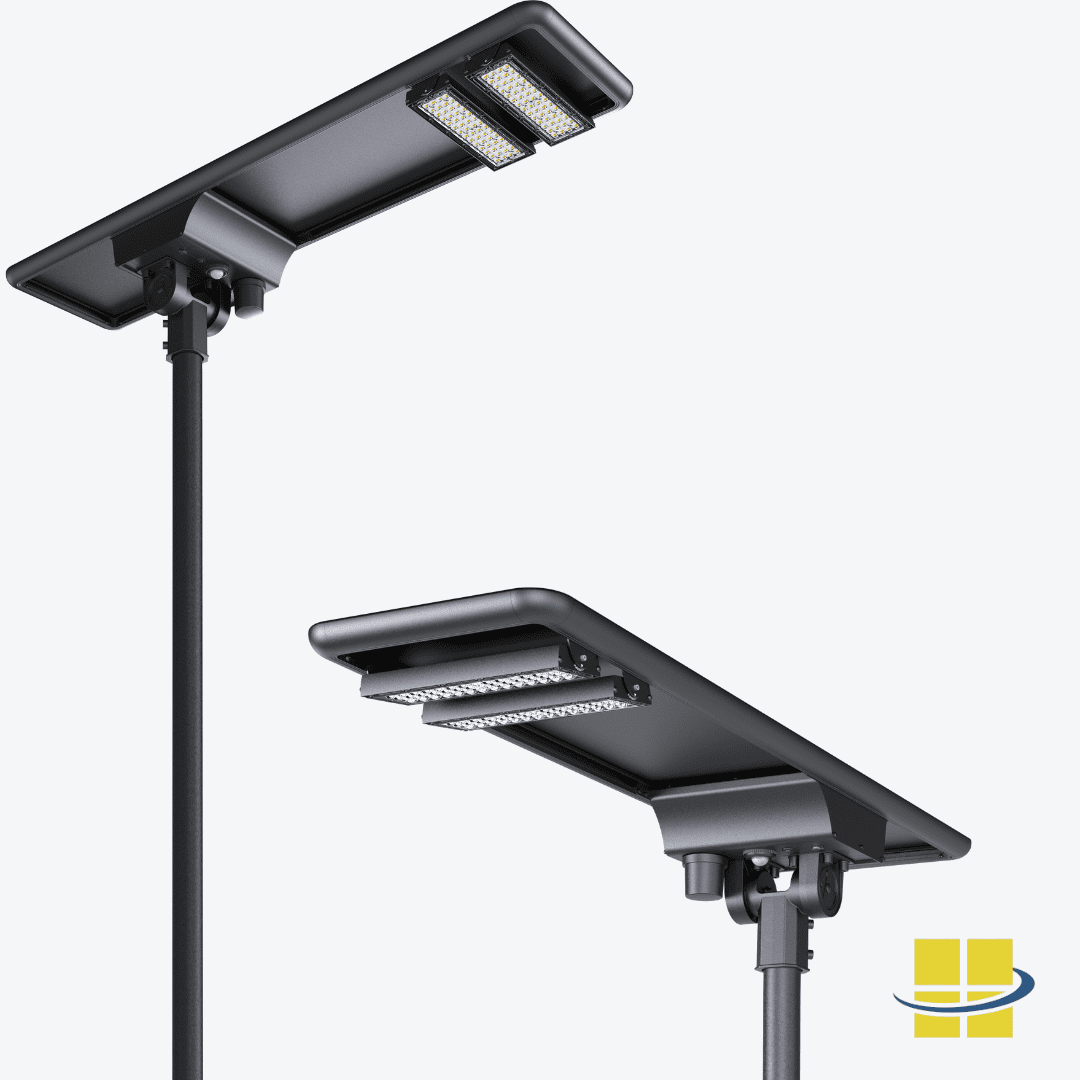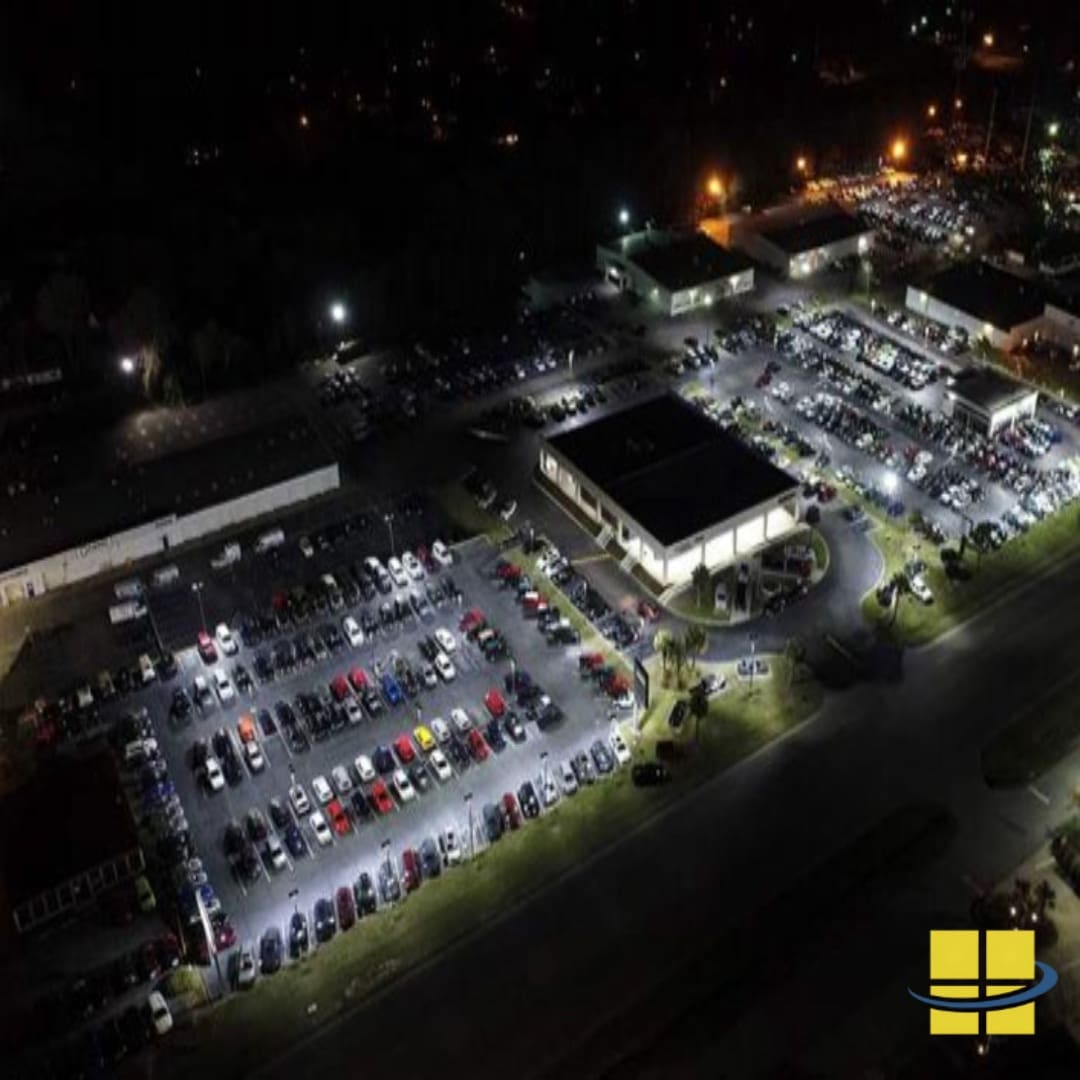Solar parking lot lights are a critical advancement in outdoor lighting, providing sustainable solutions to one of the most energy-intensive needs—illuminating large outdoor spaces. Traditional parking lot lights consume massive amounts of electricity, adding significantly to operational costs and environmental impact. Solar-powered alternatives eliminate this concern by harnessing sunlight during the day and using it to light up parking areas at night.
With the rise of renewable energy solutions, solar parking lot lights have become more efficient and cost-effective. Their light output is impressive, with high lumen outputs such as 6,475 lumens for a 35W lamp and 12,025 lumens for a 65W lamp, emphasizing the brightness and efficiency of these lighting solutions. Their widespread adoption helps reduce carbon footprints, improve public safety, and offer a visually appealing light source for urban and rural areas alike.
Key Takeaways
-
-
Long-Term Cost Savings: While solar parking lot lights have a higher initial cost compared to grid-powered lighting, they offer significant long-term savings through zero electricity bills and minimal maintenance, with a return on investment typically within 3 to 5 years.
-
Low Maintenance and Durability: Equipped with mono-crystalline photovoltaic panels, LiFePO4 batteries, and LED fixtures, solar lights require minimal upkeep, making them a cost-effective, long-lasting solution for outdoor lighting.
-
Environmental and Energy Efficiency: Solar parking lot lights rely on renewable solar energy, reducing carbon emissions and operational costs, making them an eco-friendly and efficient alternative to traditional grid-powered lighting systems.
-
Five (5) Benefits of Solar Parking Lot Lights
1. Long-Term Cost Savings
While the initial cost of solar parking lot lights may seem higher compared to traditional grid-powered systems, the long-term savings make it a smart investment. These systems offer high light output, with options like 6,475 lumens for a 35W lamp and 12,025 lumens for a 65W lamp, ensuring both brightness and efficiency. By eliminating electricity bills and reducing maintenance costs, the return on investment (ROI) typically occurs within 3 to 5 years. Access Fixtures helps customers maximize these savings by providing expert guidance and tailored solutions to meet your specific needs.
2. Low Maintenance and Durability
Equipped with high-efficiency mono-crystalline photovoltaic panels, LiFePO4 batteries, and LED fixtures, solar parking lot lights are designed to require minimal maintenance. These lights offer high light output, with options like 6,475 lumens for a 35W lamp and 12,025 lumens for a 65W lamp, ensuring bright and efficient illumination. These components are built to last for decades, reducing the need for frequent repairs and costly replacements. Plus, Access Fixtures provides ongoing support to ensure your system remains in optimal condition throughout its lifespan.
3. Environmental and Energy Efficiency
Solar parking lot lights harness renewable solar energy, significantly reducing carbon emissions and dependence on non-renewable resources. These systems provide high light output, with lumen output ranges such as 6,475 lumens for a 35W lamp and 12,025 lumens for a 65W lamp, highlighting their overall brightness and efficiency. With zero electricity consumption from the grid, these systems help businesses and municipalities meet sustainability goals while lowering their overall ecological footprint.
Many cities, such as San Bernardino, Los Angeles, Las Vegas, and Kentucky, are turning to solar-powered streetlights to address issues like vandalism, copper wire theft, and high maintenance costs. These cities are increasingly adopting solar streetlighting as a sustainable and cost-effective solution. For instance, San Bernardino received a $250,000 grant from the U.S. Department of Energy to install solar streetlights to combat copper wire theft and improve energy efficiency. Similarly, Los Angeles has launched a pilot program with 900 solar streetlights to reduce the city’s growing repair costs and maintenance challenges caused by over 25,000 non-functioning streetlights due to vandalism and theft.
This transition to solar-powered lighting is gaining momentum not only because it reduces electricity costs, but also because solar streetlights operate independently of the electrical grid, eliminating the need for copper wiring—a major target for theft. Additionally, solar panels can maintain 90% of their original output even after 20 years, according to the National Renewable Energy Laboratory, making them a durable and reliable option for outdoor lighting. Click here to read more about how Cities Turn to Solar Streetlights Amid Copper Theft Challenges.
4. Tax Incentives and Government Rebates
In many regions, solar lighting installations qualify for tax incentives, rebates, and grants. These financial benefits can help offset the initial costs of installation, making solar lighting an even more attractive option. Access Fixtures’ experts can guide you through the process of identifying and securing these incentives, helping you achieve faster ROI.
5. Faster Installation with No Utility Inspection Delays
Unlike grid-powered lighting systems, solar parking lot lights don’t require connection to the electrical grid, eliminating the need for utility inspections and costly trenching. This significantly speeds up the installation process, allowing businesses and municipalities to light up their parking lots more quickly and efficiently. Whether you’re managing an urban or rural project, Access Fixtures will ensure that your installation is smooth and hassle-free.
How Do Solar Parking Lot Lights Work?
At the heart of solar parking lot lights is a simple yet highly effective system of components:
-
Solar Panels: These capture sunlight and convert it into electrical energy. They’re typically made of photovoltaic cells that harness solar energy even in cloudy conditions.
-
Rechargeable Batteries: During the day, the energy from the sun is stored in batteries. These batteries ensure that power is available throughout the night, even during extended periods of cloudy weather.
-
LED Light Fixtures: LEDs are used because they are energy-efficient, long-lasting, and provide bright, focused light. These fixtures offer high light output, with lumen output ranges such as 6,475 lumens for a 35W lamp and 12,025 lumens for a 65W lamp, highlighting their overall brightness and efficiency. LEDs also reduce maintenance costs due to their durability.
-
Charge Controllers: These regulate the amount of charge flowing into the batteries, preventing overcharging or undercharging, which can extend the lifespan of the system.
-
Sensors and Timers: Many solar parking lot lights are equipped with motion sensors or timers, which help optimize energy usage by turning on the lights only when needed.

Solar Parking Lot Light Options
Solar parking lot lights offer a range of options to suit different needs and applications. Whether you’re illuminating a small parking area or a large commercial lot, there are several key features to consider:
-
Lumen Output: Solar parking lot lights come in various lumen outputs, ranging from 7,400 to 22,200 lumens. This allows you to choose the right amount of light for different parking lot sizes and layouts, ensuring optimal visibility and safety.
-
Pole Height and Style: These lights can be installed on poles of varying heights, typically from 15 to 25 feet. You can also choose from different styles, such as cobra head, dome-shaped tops, and decorative fixtures, to match the aesthetic of your parking lot.
-
Solar Panel Size and Type: Solar parking lot lights can be equipped with different sizes and types of solar panels, including mono-crystalline and poly-crystalline panels. Mono-crystalline panels are known for their high efficiency and compact size, while poly-crystalline panels offer a cost-effective solution with good performance.
-
Battery Type and Capacity: The type and capacity of the battery are crucial for reliable lighting. Options include lithium-ion and lead-acid batteries, each with different capacities to ensure consistent lighting during periods of low sunlight or at night.
-
Mounting Options: Flexibility in installation is another advantage of solar parking lot lights. They can be mounted on poles, walls, or even on the ground, providing versatile solutions for various site conditions and requirements.
By understanding these options, you can tailor your solar parking lot lighting system to meet specific needs, ensuring efficient and effective illumination.
Overcoming Challenges with Solar Parking Lot Lights
Whether you’re transitioning entirely to solar lighting or adding solar fixtures to complement existing grid-powered systems, there can be challenges—but they’re easily addressed with the right solutions. By utilizing modern solar technology and expert guidance, any concerns can be quickly resolved, ensuring a seamless integration of solar lighting for your parking lot.
Installation Process
Installing solar parking lot lights is a straightforward process, thanks to their typically wireless and self-contained design. This means minimal disruption to the site and faster installation compared to traditional lighting systems. There are two common methods for mounting the poles, depending on the site conditions and project needs:
1. Bolt-Down Pole Mounting
This method involves securing the pole to a pre-installed concrete base using bolts, offering flexibility for locations where future adjustments may be needed.
- Advantages: Bolt-down mounting is quicker and easier to install, especially in areas where digging or heavy groundwork is challenging. It’s an ideal solution for spaces where lights may need to be relocated or upgraded in the future, such as parking lots that may see changes in layout or usage.
- Use Case: Perfect for urban environments, commercial lots, or areas where flexibility and ease of maintenance are priorities.
2. Direct Burial Installation
In this method, the pole is directly buried into the ground, offering a more permanent and stable solution. This method ensures longevity and durability, particularly in environments exposed to harsh weather conditions.
- Advantages: Direct burial installation provides greater stability in high-wind areas or regions prone to environmental stress. It’s a more durable solution, suitable for long-term projects that are not expected to change over time.
- Use Case: Best suited for rural or remote locations, large parking lots, or areas where a permanent, immovable setup is required.
Installation Steps
Regardless of the chosen installation method, following these key steps will ensure optimal performance and longevity for your solar parking lot lights:
- Site Assessment: Evaluate solar exposure, traffic patterns, and the coverage area to determine the best locations for the lights. Proper assessment ensures that the solar panels receive maximum sunlight during the day and provide consistent lighting at night.
- Pole Setup: Depending on the installation method, either secure the pole with bolts to a pre-installed concrete base or bury the pole directly into the ground. In both cases, ensure the pole is properly leveled and stable for long-term use.
- System Assembly: Attach the solar panels, batteries, and LED fixtures to the pole or mounting location. Ensure all components are securely fastened and properly aligned to capture the most sunlight and provide uniform illumination.
- Wiring and Configuration: Connect the internal wiring between the solar panel, battery, and LED fixture. Double-check the connections to ensure everything is working seamlessly.
- Testing and Adjustment: Test the entire system to verify proper functionality. Adjust the angles of the solar panels for optimal exposure, and make any necessary adjustments to the lights to ensure they provide even coverage across the designated area.

Benefits of a Quick and Simple Installation
- No Trenching or Extensive Wiring: Unlike traditional lighting, solar lights do not require trenching for power cables, saving time and money while avoiding disruptions to the site.
- Minimal Downtime: With streamlined installation, solar parking lot lights can be up and running quickly, reducing downtime for businesses or municipal areas.
- Scalability: Solar parking lot lights can be easily scaled to meet changing needs. If your parking lot expands, additional lights can be installed without the need for significant electrical infrastructure upgrades.
This guide is for general reference. Consult with a licensed local contractor to ensure proper installation of solar parking lot lights and poles in compliance with local regulations, safety codes, and site-specific requirements.
Maintenance and Lifespan
When selecting solar parking lot lights, consider the following features:
-
Brightness Levels (Lumens): Ensure the lights provide adequate illumination based on the size of the area.
-
Weather Resistance (IP Rating): Look for lights with a high Ingress Protection (IP) rating, indicating they are waterproof and resistant to dust.
-
Motion Sensors and Timers: These features help conserve energy by activating the lights only when necessary.
-
Battery Capacity: Choose a system with sufficient battery storage to last through extended cloudy periods.
-
Light Output: Evaluate the lumen output ranges associated with different wattage options of LED lamps. For example, a 35W lamp can provide 6,475 lumens, while a 65W lamp can deliver 12,025 lumens, ensuring high brightness and efficiency.
Key Features to Consider When Choosing Solar Parking Lot Lights
When selecting solar parking lot lights, consider the following features:
- Brightness Levels (Lumens): Ensure the lights provide adequate illumination based on the size of the area.
- Weather Resistance (IP Rating): Look for lights with a high Ingress Protection (IP) rating, indicating they are waterproof and resistant to dust.
- Motion Sensors and Timers: These features help conserve energy by activating the lights only when necessary.
- Battery Capacity: Choose a system with sufficient battery storage to last through extended cloudy periods.
Key Features of Access Fixtures LED Solar Parking Lights
- High luminous efficacy to maximize battery performance.
- Off-grid LED lighting eliminates electric bills.
- IP66-rated, IK08-rated, and L70-rated @ +50,000 hours luminaires ensure lasting and consistent high performance.
- CRI nominal 70.
- Environment friendly – 100% powered by the sun, solar panels reduce fossil fuel consumption, eliminating pollution.
- Self-contained solution – Light on/off controlled by automatic daylight sensing.
- Simple installation and maintenance.
- Equipped with LiFeP04 battery to store and provide energy for immediate requirements, and enable backup for days when there is little or no sun.
- Low-voltage solar controller technology with dimming capabilities.
- Operating Temp: -30°C to +45°C (-22°F to 113°F)

Cost and ROI of Solar Parking Lot Lights
While the upfront cost of a 200w solar parking lot light is higher than a comparable 200w grid-powered light due to the inclusion of solar panels and batteries, the overall installation costs can be equal or even lower. When factoring in the expenses for an electrician’s labor and wiring required for grid-powered lights, the total cost of installing a 200w solar LED parking lot light becomes comparable, and in some cases, more economical, depending on labor rates.
Comparison with Grid Power Over Time
- Zero Electricity Costs: Solar lights rely on sunlight, eliminating electricity costs after installation. Grid-powered lights, by contrast, incur ongoing energy expenses, which can be significant, especially for large lots requiring long hours of illumination.
- Lower Maintenance Costs: Solar parking lot lights, equipped with LiFePO4 batteries and LED fixtures, require minimal maintenance. In contrast, grid-powered systems often require more frequent servicing due to potential wiring issues or electrical malfunctions, leading to higher maintenance costs over time.
- Long-Term ROI: Though the initial investment in solar is higher, the return on investment typically occurs within 3 to 5 years, thanks to reduced energy and maintenance costs. Over time, solar lighting becomes significantly more cost-effective than grid-powered alternatives, which continuously generate utility and maintenance expenses.
This makes solar parking lot lights a smart choice for those looking to reduce operational costs and promote sustainability in the long run.
Combining Grid-Powered and Solar Parking Lot Lights: A Hybrid Solution
In certain cases, using a hybrid lighting system where part of a parking lot is powered by the grid and another part by solar lights—can be highly beneficial.
How It Works
In this setup, grid-powered lights are installed in high-traffic or critical areas, while solar lights are used in less-frequented zones, like remote or overflow areas. The systems work independently, providing consistent lighting across the lot.
Three (3) Key Benefits of Solar Parking Lot Lights in Hybrid Systems
When incorporating solar parking lot lights into a hybrid lighting system, businesses and municipalities can unlock several key advantages. Hybrid systems combine both grid-powered and solar-powered lights to create a cost-effective, energy-efficient solution for parking lot illumination. Below are the top reasons why solar parking lot lights are an excellent addition to any hybrid system:
1. Reducing Power Drop
In large parking lots, running electrical wiring over long distances can result in power drops and decreased lighting efficiency. Solar parking lot lights eliminate the need for long wiring runs, ensuring consistent and reliable illumination without the risk of voltage drops, particularly in remote or hard-to-reach areas. This not only improves lighting performance but also reduces maintenance costs associated with managing electrical infrastructure over large distances.
2. Simplifying Expansion Without Infrastructure Challenges:
As parking lots expand, whether across roads or within the same property, trenching for electrical wiring can be both expensive and disruptive. Solar parking lot lights offer a cost-effective solution by eliminating the need for trenching and infrastructure installation. This streamlines the expansion process and minimizes disruptions, all while providing effective lighting.
3. Meeting Regulatory and Environmental Compliance:
In many areas, regulations may restrict trenching or electrical installations, particularly in locations with environmental protection laws, historic preservation zones, or utility easements. Solar parking lot lights enable businesses to meet these regulatory requirements while maintaining necessary illumination, making them an ideal choice for eco-friendly and compliant lighting solutions.
Reasons for a Hybrid System
- Cost Efficiency: Solar lights help reduce energy bills, while grid-powered lights cover areas where solar may be less effective due to shading or high usage.
- Energy Redundancy: Solar lights offer backup in case of grid outages, ensuring uninterrupted lighting.
- Phased Transition to Solar: A hybrid system allows businesses to gradually incorporate solar lighting without a full upfront conversion cost.
- Optimized Solar Use: Grid power can cover shaded sections, while solar lights can be placed in sun-exposed areas to maximize efficiency.
Check out this case study analyzing the cost, performance, and importance of a photometric when planning to illuminate a parking light. The comparison is based on the CARA 199W grid-powered LED fixture and the SUNA 200W solar LED parking lot light fixture.
Case Study: Solar LED Parking Lot Lights: Grid-Powered LED Lights vs LED Solar Lights
Conclsion
In conclusion, solar parking lot lights provide a comprehensive solution for a variety of customer challenges, offering benefits that extend well beyond just illumination. For businesses and municipalities looking to cut energy costs, solar lights eliminate the burden of rising electricity bills, thanks to their zero power consumption from the grid. The durable LiFePO4 batteries and LED fixtures drastically reduce maintenance needs, solving the problem of frequent, costly repairs or component replacements.
Additionally, these lights offer a flexible installation process with options like bolt-down pole mounting or direct burial, allowing for easy adaptation to any site condition. Whether you’re managing a parking lot in a remote area or a bustling urban center, the combination of grid power and solar lighting provides backup solutions for uninterrupted lighting and energy resilience.
Most importantly, solar lights contribute to sustainability goals by utilizing renewable energy, helping organizations meet environmental regulations and corporate social responsibility targets. With a quick return on investment, enhanced safety from consistent lighting, and a positive environmental impact, solar parking lot lights effectively address key operational concerns, making them a smart choice for forward-thinking businesses.
LED Solar Parking Lot Lighting Frequently Asked Questions (FAQs)
You have questions on high-performance LED solar parking lot lighting. We have answers. If you have a question that isn’t answered below, contact an Access Fixtures lighting specialist at (800) 468-9925 or click here.
How do solar parking lot lights store energy?
Solar parking lot lights store energy using rechargeable batteries that collect energy from the sun during the day and release it at night.
What type of batteries are commonly used in solar parking lot lights?
Lithium Iron Phosphate (LiFePO4) batteries are commonly used due to their long lifespan, durability, and ability to handle high charge/discharge cycles.
How long do solar parking lot lights last?
The lifespan varies by component, but solar panels can last 20-25 years, and LED fixtures, like Access Fixtures’ solar lights, can last up to 270,000 hours (about 30 years).
Are solar parking lot lights effective in cloudy conditions?
Yes, solar panels can still capture energy in cloudy conditions, although efficiency is reduced.
What maintenance is required for solar parking lot lights?
Minimal maintenance is needed, typically involving periodic cleaning of solar panels and occasional battery checks.
How do solar parking lot lights improve safety?
Solar lights enhance visibility, reducing accidents and vandalism, and can be equipped with motion sensors for added security.
What’s the difference between grid-tied and off-grid solar parking lot lights?
Grid-tied lights are connected to the local utility grid, while off-grid lights operate independently, making them ideal for remote locations.
Can solar parking lot lights be combined with grid-powered lights?
Yes, hybrid systems allow part of a parking lot to use solar lights and another part to rely on grid power, offering flexibility and cost management.
How do motion sensors and timers improve energy efficiency?
Motion sensors and timers reduce energy consumption by activating the lights only when motion is detected or at specific times.
What factors influence the ROI of solar parking lot lights?
Initial installation costs, energy savings, maintenance requirements, and the availability of government incentives all contribute to the return on investment.


